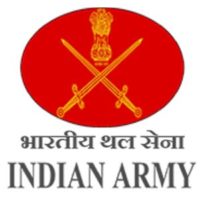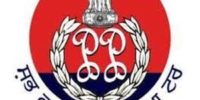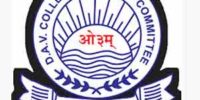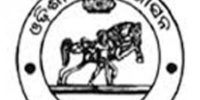Army Agniveer (Agneepath Scheme) Syllabus 2023 | Agniveer Army Syllabus | Agniveer Army GD Syllabus | Agniveer Army Clerk Syllabus | Agniveer Maths Syllabus | Indian Army Syllabus 2023 PDF Download
Army Agniveer (Agneepath Scheme) Syllabus 2023 | Agniveer Syllabus 2023: The syllabus for the Indian Army should be familiar to Agniveer Positions. The Indian Army will soon publish the Army Agniveer (Agneepath Scheme) Exam Pattern and Army Agniveer Syllabus on its website. You may get these documents at kanpur.cantt.gov.in. For the Army Agniveer (Agneepath Scheme) hiring process, candidates must pass a written test method. In order to prepare for their varied roles, job seekers may learn from this post what thorough Army Agniveer Exam syllabus they should follow. Job seekers might take advantage of this opportunity to work for the Central government
| RELATED LINKS |
|
| Army Agniveer (Agneepath Scheme) Previous Year Question Papers | Army Agniveer (Agneepath Scheme) Books |
Army Agniveer (Agneepath Scheme) Exam Syllabus PDF
After finishing the Army Agniveer (Agneepath Scheme) Syllabus, you must complete the Army Agniveer (Agneepath Scheme) Previous year’s papers. This will enable you to assess your degree of exam readiness at the moment. Get information on current job openings by clicking here.
- Additionally, you’ll be aware of the amount of work required for preparation.
- so that you may make the most of the remaining days of your exam.
- The exam syllabus should be reviewed by candidates before they begin their preparation.
- They will be able to cover all the test subjects as a result.
- As long as the recruiting process is ongoing, adhere to the precise timeline.
- To better understand the test format and sorts of questions presented, solve theArmy Agniveer (Agneepath Scheme) Exam Question Papers
| Notification Details | |||||
|---|---|---|---|---|---|
| Recruiter | Indian Army | ||||
| Designation | Agniveer | ||||
| Vacancies/Post | Multiple | ||||
| Official Website | http://joinindianarmy.nic.in | ||||
| Join our Telegram | |||||
Indian Army Agniveer Exam Pattern 2023 | Army Agniveer Exam Pattern
Besides that, Exam Pattern for Army Agneepath Scheme Syllabus posts is also important to secure the highest marks. So, aspirants have to follow some prescribed study materials. For better clarity on the upcoming Army Agneepath Agniveer Bharti Syllabus exams, applicants should refer to the Exam pattern & Syllabus
Soldier Clerk Detailed Exam Pattern
| Subjects | Maximum Questions | Maximum Marks |
| General Knowledge | 05 Questions | 20 Marks |
| General Science | 05 Questions | 20 Marks |
| Mathematics | 10 Questions | 40 Marks |
| Computer Science | 05 Questions | 20 Marks |
| English | 25 Questions | 100 Marks |
| Total | 50 Questions | 200 Marks |
Soldier Detailed Exam Pattern
| Subject | Questions | Marks | Pass Marks |
| General Knowledge | 15 Questions | 30 Marks | 35 |
| General Science | 15 Questions | 30 Marks | |
| Maths | 15 Questions | 30 Marks | |
| Logical Reasoning | 05 Questions | 10 Marks | |
| Remarks: NCC ‘C’ Cert Holders are Exempted | |||
Indian Army Agniveer Syllabus 2023 | Army Agniveer Bharti Syllabus: Post Wise
Army Agneepath Scheme Syllabus Syllabus also eases the preparation by defining the topics on which a candidate can be tested. Understanding the Army Agneepath Scheme exam pattern is of utmost importance to know the scheme of the examination and to prepare accordingly.
Soldier Clerk Detailed Syllabus
General Knowledge
- Abbreviations – National and International.
- Sports – National and International.
- Awards & Prizes – National awards, Gallantry awards, Nobel Prizes.
- History – Important dates & battles in Indian and World History and landmarks of Indian History, and national movement.
- Geography – Solar System Space exploration, The earth’s principal peaks, Deserts, Rivers, Lakes and famous waterfalls, Geographical Tallest, Biggest and Longest etc.
- Terminology – Geographical terms, Economic terms, Astronomical terms, Legal terms and Misc terms.
UNO
- Indian Armed Forces.
- Indian Towns, States and Uts.
- Institutions and Research Stations,
- International space Stations and Festivals of India and World.
- Indian News Agencies and Dailies.
- Continents and Sub Continents.
- Inventions and Discoveries. 2 Environment.
- The Constitution of India.
- Religious communities and Principal Languages.
- National and International Days.
- International Organizations.
- Books and Authors.
- The world of Plants and animals.
- Current Affairs and “Who’s Who”
General Science
Human Body
- Food and nutrition,
- diseases and prevention, vitamins and their uses.
- The question of General Science consisting of topics related to Physics, Chemistry and Biology based on fundamentals and day to day activities
- Medical Terms,
- Scientific Terms,
- Scientific and Research Institutes in India.
IO/Numeral Ability
- The questions will be based on the ability of the candidates of age group ranging between 16 & 20 years.
Mathematics
Algebra
- Addition
- Subtraction
- Multiplication and division of algebraic expressions
- HCF & LCM
- Factorization
- Simple Equations
- Surds
- Indices
- Logarithms
- Solution of linear equations of two and three variables.
- Ratio and proportion meaning and standard form,
- Roots and discriminant of a quadratic equation ax^2+ bx + c = 0
Arithmetic
- Natural numbers
- integers, fractions
- rational/irrational numbers
- decimal fractions
- HCF & LCM
- square root
- ratio and proportion
- percentages
- averages
- profit & loss
- simple and compound interest
Mensuration
- Area and Volume:
Area of four walls of a room, area of a circle, sector and segment of a circle; surface area and volume of cube, cuboids cone, cylinder, sphere.
- Trigonometry
Trigonometric ratios of an angle A of a right angle triangle, Simple applications of trigonometric ratios for solving problems of different types, Simple identities based upon the above.
- Heights and Distances
Solution of simple problems of height and distance using trigonometric tables and logarithmic tables.
Geometry
- Lines and Angles
- Statistics
- Histograms with given intervals
- Classification of data
- Frequency
- Frequency polygons, ogives.
- Mean, median and mode of grouped and ungrouped data, problems related to statistical techniques.
Computer Science
Computer System
- Characteristics of a computer
- Basic applications of a computer
- Components of a computer system – Central Processing unit (CPU), Visual Display Unit (VDU), Keyboard.
Concept of memory
- Primary and Secondary Memory
- RAM and ROM, Units of Memory – Byte, Kilobyte, Megabyte, Gigabyte, Terabyte.
Input/Output Devices
- Mouse
- JoyStick
- Scanner
- Microphone
- OCR
- MICR
- Light pen
- Barcode Reader
- Digital Camera
- Printer, Speaker
- Plotter.
MS-Windows
- Basic concept of an Operating System and its functions.
Introduction to Windows
- Using Mouse and moving icons on the screen
- My computer
- Recycle Bin
- Task Bar
- Start Menu and menu selection
- running an application,
- setting system date and time
- Windows Explorer to view files, folders and directories
- creating and renaming of files and folders
- Opening and Closing of Windows Minimise
- Restore and Maximise forms of windows
- Basic components of a Window : Desktop, Frame, Title Bar, Menu Bar, Status Bar, Scroll Bars (Horizontal and Vertical)
- Using right button of the Mouse
- Creating Shortcut
- Basic Windows, Accessories : Notepad, Paint, Calculator, Wordpad.
MS-Word
- Introduction to a Word Processor,
- Creating and Saving a Document,
- Editing and Formatting a Document ; Text Style (B.I.U),
- Font Type, Size, changing colour, alignment of text
- Formatting paragraphs with line or paragraph spacing
- adding headers and footers, numbering pages, using
- grammar and spell utilities,
- using subscript and superscript,
- inserting symbols,
- Print Preview, Printing a document,
- Inserting WordArt, Clipart and Pictures,
- Page setting,
- Bullets and Numbering,
- Borders and Shading,
- Format painter,
- Find and Replace,
- Inserting Tables: inserting, deleting-rows and columns, merging cells, splitting cells, using auto format.
MS-Powerpoint
- Introduction to presentation Graphics,
- understanding the concept of slideshows, Basic elements of a slide,
- Different types of slide Layouts,
- Creating and saving a presentation,
- Different views of a slide : Normal view, Slide Sorter view and Slide Show,
- Editing and Formatting a slide : Adding Titles, Subtitles, Text, Background, Watermark; Headers and Footers, Numbering Slides.
MS-Excel
- Introduction to Spreadsheets,
- Concept of Worksheets and workbooks,
- Creating and Saving a worksheet,
- Working with a spreadsheet: entering numbers, text, date/time,
- series using Autofill,
- Editing and formatting a worksheet including changing colour, size, font, alignment of text, inserting or deleting cells, rows and columns.
General English (Grammar)
- Parts of Speech
- Article, Noun and Pronoun, Adjective, Preposition, Conjunction and modals.
- Verbs
- Tenses: Present/past forms, Simple/continuous form, Prefect forms, future time reference
- Sentence Structures
- Types of Sentences: Affirmative/interrogative sentences
- Use of Phrases, Direct and Indirect speech
- Other Areas
- Idioms and Phrases
- Synonyms and antonyms
- One word substitution
Soldier GD and Tradesman Detailed Syllabus
General Knowledge
- Abbreviations – National and International.
- Sports – National and International.
- Awards & Prizes – National awards, Gallantry awards, Nobel Prizes.
- History – Important dates & battles in Indian and World History and landmarks of Indian History, national movement.
- Geography – Solar System Space exploration, The earth principal peaks, Deserts, Rivers, Lakes and famous waterfalls, Geographical Tallest, Biggest and Longest etc.
- Terminology – Geographical terms, Economic terms, Astronomical terms, Legal terms and Misc terms.
UNO
- Indian Armed Forces.
- Indian Towns, States and Uts.
- Institutions and Research Stations,
- International space Stations and Festivals of India and World.
- Indian News Agencies and Dailies.
- Continents and Sub Continents.
- Inventions and Discoveries. 2 Environment.
- The Constitution of India.
- Religious communities and Principal Languages.
- National and International Days.
- International Organisations.
- Books and Authors.
- The world of Plants and animals.
- Current Affairs and “Who’s Who”.
General Science
Human Body
- Food and nutrition,
- diseases and prevention, vitamins and their uses.
- The question of General Science consisting of topics related to Physics, Chemistry and Biology based on fundamentals and day to day activities
- Medical Terms,
- Scientific Terms,
- Scientific and Research Institutes in India.
Mathematics
Arithmetic
- Natural numbers
- Decimal fractions
- HCF & LCM
- square roots
- Ratio and Proportion
- Partnership
- Percentage
- Average
- profit & loss
- Unitary Method
- Time, Work, and Distance
- simple interest
Algebra
- Basic operations and Factorization
- HCF & LCM
- Quadratic Equations
Geometry
- Lines and Angles
- Triangles, Quadrilaterals
- Parallelograms and Circles.
Mensuration
- Area and perimeters of Squares, rectangles, parallelograms, and Circles, Volume, and surface area of a cube
- Cuboids cone, cylinders, and sphere.
***THE END***
We have provided these study Materials so that you can practice and we hope this has been helpful to you. For more information on the position, salary offered and the exam, Naukrimessenger.Com has everything you need. You would need along with great upcoming Job offers that are too hard to let go of. Bookmark & Join our Telegram Channel page today and see everything on it!
| Important Details |
|---|




